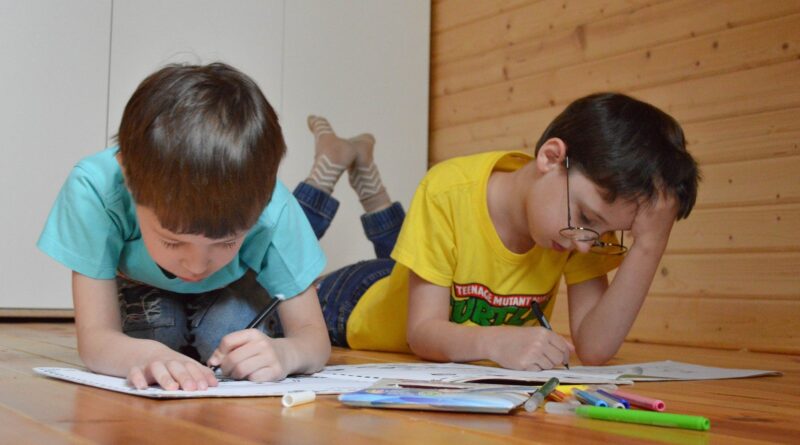How to make home schooling with bilingual children more effective
Almost all of Europe has been ordered to stay at home to contain the spread of coronavirus Covid-19. For those with children in school age this means trying to get on top of home schooling. That is not an easy task at the best of times, let alone in the midst of a pandemic. And when multiple languages are involved, the task gets even harder.
According to the EU statistical office Eurostat, in 2018 almost 4% of EU citizens of working age (20-64) lived in an EU country other than that of their citizenship. That makes a total of about 17 million people. Adding citizens from outside the EU, this means there are probably millions of children who are now in isolation at home in countries where they attend school in a language different from that of their family.
Despite the many difficulties the situation involves, the lockdown due to the coronavirus pandemic can also open a window of opportunity to help these children’s bilingualism.
Home schooling in one language can support another language
Bilingual education academics have developed methodologies that boost learning in new content and in two languages at the same time. Welcome to Content and Language Integrated Learning (CLIL) and to Translanguaging pedagogy!
Content and Language Integrated Learning (CLIL) was originally developed by David Marsh in 1994. It is now an established professional practice in bilingual education and in modern foreign language teaching, albeit a specialist field in the teaching profession.
Both the European Commission and the Council of Europe endorse CLIL pedagogy as an effective way to develop multilingual competence.
Translanguaging in the classroom was originally developed by Welsh educationalist Cen Williams in the 1980s, during the push for the revitalisation of the Welsh language. In the last two decades it has grown into an international field of educational research and practice, now beyond the classroom.
“Translanguaging entails using one language to reinforce the other in order to increase understanding and in order to augment the pupil’s ability in both languages.”
Cen Williams, A language gained: A study of language immersion at 11–16 years of age, Bangor, UK, 2002.
In a nutshell, CLIL is about learning new knowledge in a language the pupil is only just learning. Translanguaging is about moving between languages to make sense of new knowledge. They are two distinct ways of enhancing learning and they can be combined.
Although both CLIL and translanguaging in the classroom require advanced teaching skills, the basic principles can work for any bilingual parent supporting their children’s homework. However, if the family live abroad and the child has stopped speaking the parent’s native language, the homework should be done in the language the child does speak. It does not mean it is too late to help the child’s bilingualism. There are more suitable ways to activate dormant languages.
How to use CLIL and translanguaging for homework
Let’s imagine a family living in the UK with at least one of the parents speaking a native language which is anything but English. Let’s also imagine that the native language is regularly used with the child who is schooled in English. Now the school has sent in homework in many subjects, from maths and English to history, art and science. What to do to use the opportunity to improve knowledge in both content and languages?
Step 1 – The parent prepares. The first thing to do as a parent is to take responsibility for the content learning. This means reading the homework alone and understanding what is being taught. Then the parent takes the first step of translanguaging by explaining to him or herself the content of the child’s homework in their native language. Translation forces to think about meaning more precisely and allows to tap into a far larger pool of resources than those available in one language only. This is the heart of translanguaging. Next, the parent takes the first step of CLIL by searching suitable knowledge resources on the same topic in the native language, selecting only one to use with the child. It could be anything from a story, a page of a knowledge book, a webpage, a video, a song or a piece of art. The important thing is being able to create a good conversation about the topic around that resource in the native language. As a guideline, in CLIL pedagogy, lesson planning takes roughly three times longer than the actual lesson. A parent can initially spend 30 minutes preparing for a 15-minute home lesson with the child. This will not be possible for everything, but it works for one target topic each day, and with practice preparation time will become shorter.
Step 2 – The child explains. The home-schooling session starts by introducing the topic in the parent’s native language and then stating the topic as it is written in the English homework. Then the child is invited to explain what he or she already knows about the topic or what the topic might be about in any language or in any mix of languages that comes natural. This is important to find the stepping-stones to build on. It is good to help children find the right expressions when they are searching for words, and potential misunderstandings should be gently corrected by discussing new knowledge. It will be fascinating to discover what children think about things.
Step 3 – Learning new content together. This is the part traditionally called teaching. Parent and child make sense of the homework materials by reading them aloud in English and discussing the meaning phrase by phrase in the parent’s native language (translanguaging). Now is the time to introduce the selected resource. When there are problems with understanding, they can be overcome by explaining and finding practical examples in the parent’s native language (CLIL). When that does not work, the meaning is found in English and then translated into full sentences in the parents’ native language (translanguaging).
Step 4 – Producing the homework in the school language. The homework output is then produced in English discussing what the task requires in two languages. The child needs to narrow the bilingual thinking process down to the homework in English and the parent needs to support that process. Much of the content learning happened in the parent’s language: now the writing happens in English. At this stage the two languages are separated quite neatly and compared. The conversation is still in the parent’s native language while the fine-tuning of the written expressions is in English. In the child’s mind the learning is now anchored into both languages and into a far wider knowledge base.
Not more work, but more effort
Does this involve more work than just teaching in English? Actually, not more work because a good learning session would have to include similar steps. But it takes more effort.
The result, however, is that both languages improve and the child also makes excellent progress with content learning. Findings from the emerging field of neurological research into learning by translanguaging suggest that learning is enhanced when something is learned in one language and then used in another.
The effort is also far more contained than trying to achieve the same results by teaching the same topic separately in two languages. This effort is essential for bilingual development to continue pleasantly and it will remain a powerful aid throughout the child’s education.
Soile Pietikäinen © all rights reserved.
The author is a sociologist specialised in bilingual family interaction. She helps families through private bilingual family consultancy and is the founder of Bilingual Potential, an ethical business dedicated to every child’s right to learn and use the language of his or her parents, as defined in the Article 30 of the UN Convention of the Right of the Child.
Image via Pixabay.
Europe Street News is an online magazine covering citizens’ rights in Europe. We are fully independent and we are committed to providing factual, accurate and reliable information. We believe citizens’ rights are at the core of democracy and information about these topics should be accessible to all. This is why our website and newsletter are available for free. Please consider making a contribution so we can continue and expand our coverage.





